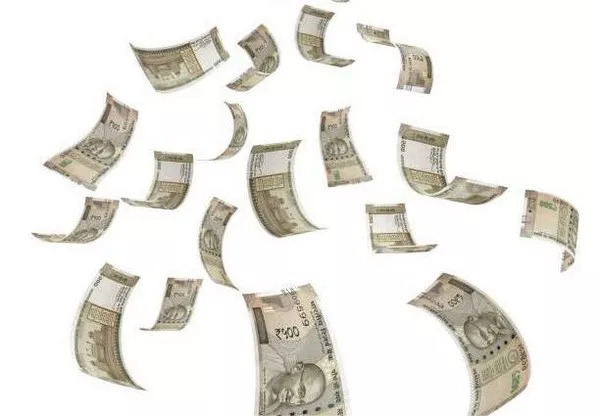In the intricate web of economic forces, inflation stands out as a potent factor influencing the valuation of currencies. The Indian Rupee (INR), a key player in the global currency arena, is not immune to the ebbs and flows of inflation. This article explores the multifaceted relationship between inflation and the Indian Rupee, shedding light on the dynamics that shape its value against the backdrop of rising and falling price levels.
Understanding Inflation
The Inflationary Jigsaw:
At its core, inflation refers to the sustained increase in the general price level of goods and services over a period. Inflation erodes the purchasing power of a currency, meaning that each unit buys fewer goods and services compared to the past. Understanding the nuances of inflation is crucial to deciphering its impact on the Indian Rupee.
Measurement Metrics:
Inflation is often measured using indices such as the Consumer Price Index (CPI) and the Wholesale Price Index (WPI). The CPI reflects the average change over time in the prices paid by urban consumers for a market basket of consumer goods and services, while the WPI tracks the average changes in prices received by producers.
Inflation’s Ripple Effect on the Indian Rupee
Currency Valuation Dynamics:
The relationship between inflation and the Indian Rupee is dynamic and interconnected. Several key dynamics come into play, influencing how the currency reacts to changing inflationary pressures. These dynamics extend beyond simple cause and effect, weaving a complex tapestry that requires a nuanced understanding.
Purchasing Power Parity (PPP):
Purchasing Power Parity is a fundamental concept in understanding the impact of inflation on exchange rates. PPP posits that in the absence of transportation costs and other frictions, identical goods should sell for the same price worldwide when expressed in a common currency. Inflation differentials between countries can lead to adjustments in exchange rates to maintain PPP.
Real Interest Rates:
Real interest rates, adjusted for inflation, play a pivotal role in shaping currency valuations. Higher inflation erodes real returns, affecting the attractiveness of assets denominated in that currency. Investors seek higher real returns to compensate for the loss of purchasing power, influencing capital flows and, consequently, the value of the Indian Rupee.
The Dynamics of Inflation Differentials
Global Context:
In the interconnected global economy, inflation differentials between India and its trading partners contribute to exchange rate movements. A consistently higher inflation rate in India compared to its major trading partners can lead to a depreciation of the Rupee. Conversely, lower inflation may enhance the Rupee’s value.
Trade Balances and Competitiveness:
Inflation differentials influence trade balances by affecting a country’s competitiveness. If inflation in India outpaces that of its trading partners, Indian goods become relatively more expensive, potentially dampening export competitiveness. This dynamic relationship is crucial in understanding how inflation impacts the external value of the Indian Rupee.
The Central Bank’s Balancing Act
Monetary Policy Responses:
Central banks, including the Reserve Bank of India (RBI), often respond to inflationary pressures through monetary policy tools. Interest rate adjustments, a common strategy to control inflation, have cascading effects on the currency. Higher interest rates, employed to curb inflation, can attract foreign capital, influencing the Rupee’s value.
Inflation Targeting Framework:
The RBI’s commitment to inflation targeting adds a layer of complexity. Striking a balance between fostering economic growth and maintaining price stability, the RBI aims to keep inflation within a target range. The effectiveness of these measures reverberates through the currency markets, shaping investor perceptions of the Rupee.
Inflation’s Impact on Consumer Behavior
Domestic Consumption Patterns:
Inflation profoundly influences consumer behavior and domestic consumption patterns. As prices rise, consumers may alter their spending habits, opting for essential goods and services. These shifts in consumption dynamics have cascading effects on various sectors of the economy, influencing the overall economic landscape that, in turn, impacts the Rupee.
Inflation Expectations:
The psychology of inflation is as crucial as its economic manifestations. Inflation expectations, or the anticipation of future price increases, can influence consumer spending, investment decisions, and wage negotiations. The RBI closely monitors and manages these expectations to maintain stability in the currency markets.
Challenges and Mitigation Strategies
External Shocks:
Inflation in India is not isolated from global economic developments. External shocks, such as fluctuations in oil prices or geopolitical uncertainties, can exert additional pressure on domestic inflation. Navigating these external challenges requires a comprehensive strategy to mitigate their impact on the Indian Rupee.
Structural Reforms:
Addressing the root causes of inflation involves structural reforms. Enhancing productivity, improving supply chain efficiency, and implementing sound fiscal policies are instrumental in curbing inflationary pressures. The effectiveness of such reforms extends to bolstering the resilience of the Indian Rupee against inflation-induced fluctuations.
Conclusion
Inflation, as a pervasive force in economic landscapes, weaves a complex narrative that significantly influences the valuation of the Indian Rupee. The delicate balance between inflation control, economic growth, and exchange rate stability is a testament to the intricate dance performed by policymakers, central banks, and market participants. As India charts its course through the undulating terrain of inflation, the ripple effects on the Rupee continue to shape its trajectory on the global stage. Understanding these dynamics is essential for investors, policymakers, and businesses seeking to navigate the evolving landscape of the Indian economy.
See Also: Indian Rupee (INR) Currency: History, Symbol, Codes & Denominations


